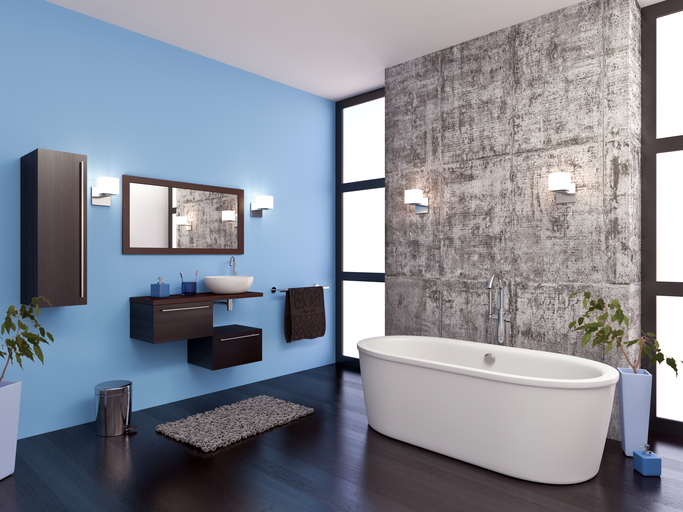 Homeowners are parting ways with traditional bathrooms and kitchens, taking a walk on the side of contemporary and transitional, according to the 2017 Kitchen & Bath Design Trends Report by the National Kitchen & Bath Association (NKBA). Their preference is as clear as black and white (er, gray and white), with subtle shades of gray and white the new neutrals in a mix of modern and conventional styles.
Homeowners are parting ways with traditional bathrooms and kitchens, taking a walk on the side of contemporary and transitional, according to the 2017 Kitchen & Bath Design Trends Report by the National Kitchen & Bath Association (NKBA). Their preference is as clear as black and white (er, gray and white), with subtle shades of gray and white the new neutrals in a mix of modern and conventional styles.
Ten percent of homeowners completed a bathroom or kitchen remodeling project in 2016, according to the NKBA, totaling $85 billion. Twenty-one percent of homeowners spent $7,500 (or more) to remodel the master bathroom, while 48 percent spent $15,000 (or more) to remodel the kitchen.
Related: Comeback Kitchen: 3 Old-Is-New Trends
How do those numbers sound? Bathrooms and kitchens are the hubs of a household—even minor upgrades can have ripple effects. (Love It or List It, anyone?) The value, though, is subjective at resale—in fact, according to Remodeling Magazine's 2017 Cost vs. Value Report, a midrange bathroom remodel ranks among the least valuable home improvements with a 65 percent return on investment, while a mid-range minor kitchen remodel ranks among the most valuable at 80 percent.
The NKBA report shows aging-in-place and technology-enabled features have become necessary elements in bathroom and kitchen design due to demand not only from an aging population, but also from multigenerational households. (Sixty-one percent of homeowners recently surveyed by HomeAdvisor plan to stay in their homes "indefinitely.") The primary motivators for both are comfort and safety—intangibles that have perceived benefits unique to the homeowner.
All of these factors raise the question: Whether the bathroom or kitchen, is resale value still a reliable measure of the "worthiness" of a remodel? The answer, based on the NKBA's report, could be another break with tradition.







